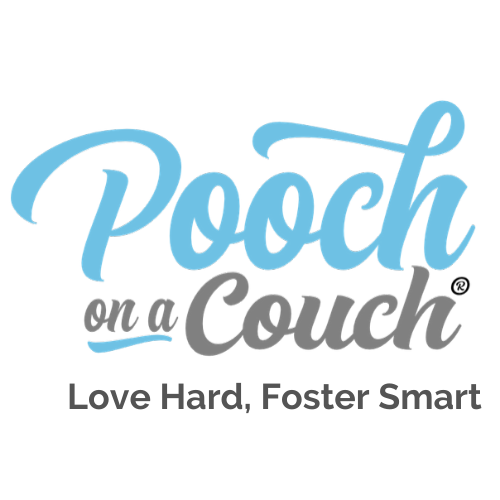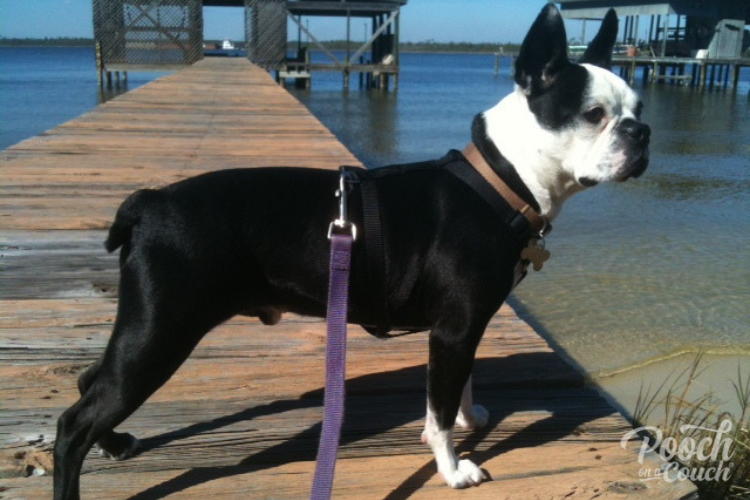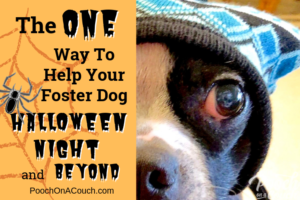Leash Reactivity: A Simple Definition
Leash Reactivity is simply described as an overreaction behavior a dog exhibits toward a trigger while attached to a leash. Dogs who are overreacting either do so out of excitement, frustration, or fear.
More often than not, leash reactivity is a fear-based behavior, according to most dog training experts.
Determining the difference requires some experience, and time to get to know your dog. Dogs who have little self-control and want to get closer to the object (e.g., the neighborhood dog they want to approach and greet) may experience excitement and frustration. On the other hand, the dog that is afraid of the object (e.g., the other dog approaching or the man with a hat) wants to increase the distance between them and the object and behaves in a way they believe is effective. In other words, they want that other thing to go away.
Leash Reactivity Behaviors
Behaviors a leash-reactive dog might exhibit: Increase pulling, lunge, bark, spin, jump, grab the leash and tug with it, whine, cry, shriek, and if you are walking two dogs at a time and at least one of them is reactive, you might find that your two dogs “tie-up” or one becomes aggressive with the other while in a highly aroused state. It’s called redirected aggression. I’ve had this happen to me on a few occasions before I learned my lesson. I now walk the reactive dog separately.
I Can’t Tell You How To Rehab Your Leash Reactive Foster Dog.
I’m not a dog trainer. That’s why. I’ve taken several reactive dogs to dog trainers, I’ve read a ton of articles and books on the subject, and my own dog has some reactivity issues, BUT I am not a trained animal behavior professional. My personal experiences have not revealed any new, earth-shattering, eye-opening information to contribute on the subject of rehabilitating your reactive dog. I’ll leave that work to the experts, and I’ll provide links to some of my favorite resources for you at the end of this post.
I also strongly encourage you to develop a relationship with a highly credentialed, LIMA (least intrusive, minimally aversive) dog trainer or behavioral consultant. COVID has brought on a host of wonderful services via virtual means for those of you who live in an area where behavioral training is not available. There IS help for you and your foster dog, no matter where you live.
If You Foster Dogs, You Will Have A Dog With Leash Reactivity.
Yep. If you foster with any regularity, you will bring home a foster dog that reacts while on leash. Your job is to determine your best course of action based upon you, your resources, your environment, and your foster dog.
“Dogs do speak, but only to
those who know how to listen.”
Orhan Pamuk
Here are my tips to care for foster dogs with leash reactivity:
- Create opportunities so your dog with leash reactivity can have safe, stress-free leash walks. Walks are supposed to be FUN!! If you live in a highly congested area such as an apartment or town home complex it is SUPER IMPORTANT that you take steps to create these opportunities. (Some dogs with leash reactivity may not do well in high-density residential areas. I encourage you to speak with your rescue agency if management of the dog is an issue.) Communicate with your neighbors about your dog and your needs. A friend of mine lives in a condo complex. She and her neighbor have coordinated morning potty times. The neighbor goes out at 6 a.m., my friend goes out at 6:15 a.m., thus avoiding both dogs being in the stairwell at the same time. Easy peasy.
If needed, put your dog in the car and drive to a less congested area so your dog can get a relaxed, enjoyable walk. Church grounds/parking lots, graveyards, and even ballfields may be great places for you to take your dog for a stress-free leash walk. Be sure to follow all rules related to private property. And don’t forget to carry “poop bags” for picking up and disposing of your dog’s waste.
- Find opportunities for safe, off-leash activities. I go to the small community dog park when I know that no one will be there. I hang a big, bold sign on the gate that says, “REACTIVE DOG – Get My Attention Before You Come In.” So far, it’s worked. Have a friend with some small fenced acreage? Go visit. When I say small, I mean small, and by fenced, I mean fenced. Letting your new foster roam on 40 acres when the fencing wasn’t checked this week is asking for a crisis. If your foster will be with you for a while, enroll them in classes. Check with your trainer on your foster dog’s readiness for these classes.
- Lose the compulsory training tools. These include: bark collars, “correction” collars, shock collars, “marker” collars, pinch collars, prong collars, flip flops, fly swatters, your two fingers, the Cesar Milan hiss&poke or any combination of the aforementioned. For excited, anxious, or fearful dogs, the risks outweigh the outcomes. An acquaintance of a friend of mine acquired a treeing walker coonhound dog that would jump the fence when it saw a dog (or any other prey.) His owner’s solution? An electric fence + shock collar to go along with the physical fence. After several shocks, the dog refused to cross the door threshold go outside at all. Now this guy has a MUCH BIGGER problem.
Also: lose the flexi-leash. It’s the worst leash to use for a dog with leash reactivity. It’s the worst leash, period.
- Get a trainer. Period. Here’s why: A credentialed trainer knows how to efficiently (< key word!) assess your foster dog and determine the most kind and effective techniques for that particular dog. If you can reduce leash reactivity, your foster dog becomes more adoptable and the return risk is also reduced. If you’ve read any of my other material, you know I’m a big advocate for everyone who fosters rescue dogs having access to a good trainer. For more information on selecting a dog trainer, click here and here.
“Everyone needs a coach. It doesn’t matter whether you’re a basketball player, a tennis player, a gymnast or a bridge player.”
Bill Gates
- Don’t walk your reactive dog. If you are unable to work with your foster dog to reduce their leash reactivity, then don’t put them in situations where they will react.
Dogs don’t learn how to “deal with it” nor do they “get used to it.” Do you know anyone in your circle of friends who is claustrophobic or has a fear of flying in an airplane, or is afraid of heights? Ask them if “dealing with it and doing it anyway” works. Get back to me on that.
Instead of “dealing with it”, find alternate activities that will engage and exercise your foster dog. Tons of fun can be had in your own home and yard! It really is OK to not provide training for reactivity, but be completely transparent and pass that information along to the dog’s new family.
I think it’s better to do nothing to help a dog with the reactivity than engage in activities that makes the reactivity worse.
Every time your foster dogs leaves the confines of your house and experiences fear or frustration without appropriate assistance from you, those emotions are reinforced, and can also become more intense. It’s just not fair to the dog. There are stories aplenty of sad outcomes when a dog’s intense emotions were disregarded.
If your leash reactive dog isn’t going to get professional intervention, then your responsibility (and that of your rescue agency) shifts to one of making an appropriate placement where the dog’s environmental and/or training needs will be met.
If you are fostering a severely leash-reactive dog, this is particularly important. Placing an intensely leash reactive dog into a home that is unaware or not equipped is awful. Awful for the family, the dog, the other pets, and the community.
Links to Professional Trainer Writings
The Feisty Fido by Patricia McConnell
How To Handle Reactive Dogs blog post by Patricia McConnell
Handling On-Lead Aggression blog post by Suzanne Clothier
Dog Reactivity – What Actually Is It? Victoria Stilwell Positively
Crazy To Calm: A Training Plan for Leash Reactivity
The dog in the picture above is Bart, my first reactive dog. When on our walks, we would always see neighborhood dogs also on their walks. Bart couldn’t decide if they were friend or foe or if he should run away or run up and say hello. Ultimately, we quit practicing our training exercises in the neighborhood and opted for quieter, more predictable outdoor spaces. Bart was much happier when he knew he wouldn’t encounter another dog, like when he visited the back bays of coastal Alabama.
Popular Posts
- HOW TO CHOOSE A DOG RESCUE AGENCY
- ULTIMATE GUIDE TO FOSTERING: 10 SKILLS YOU NEED
- VOLUNTEER IF YOU CANNOT FOSTER




